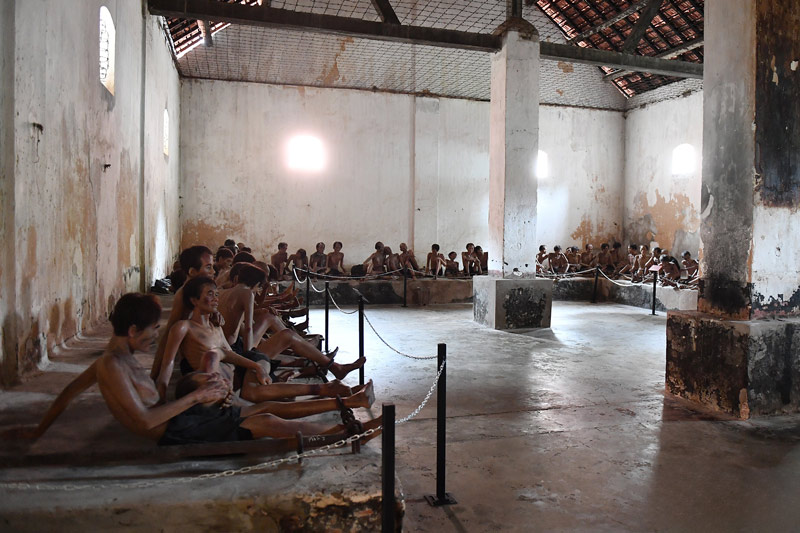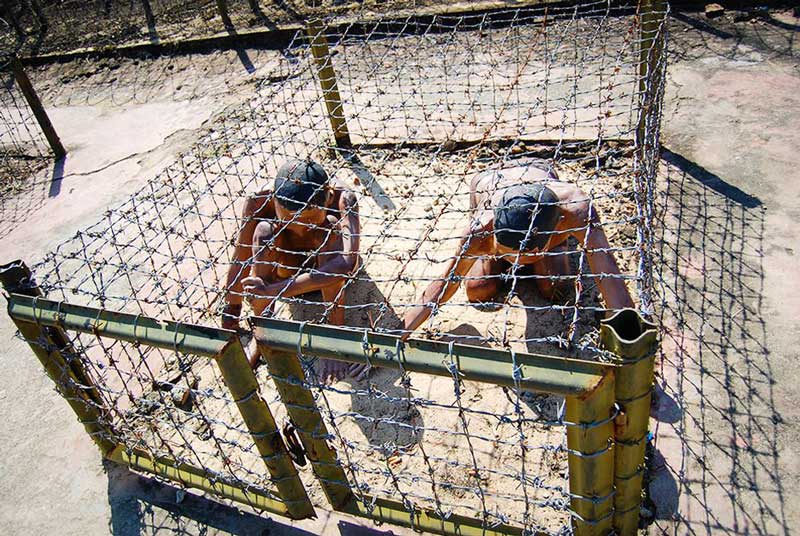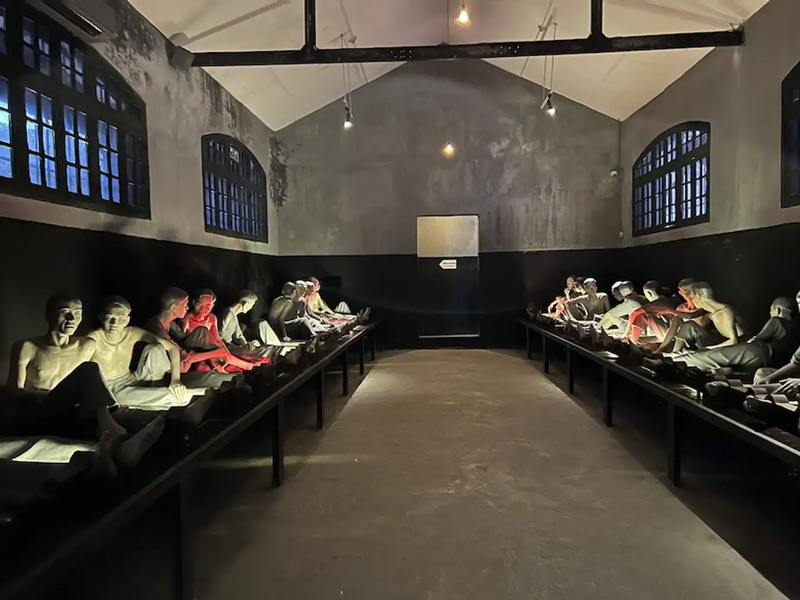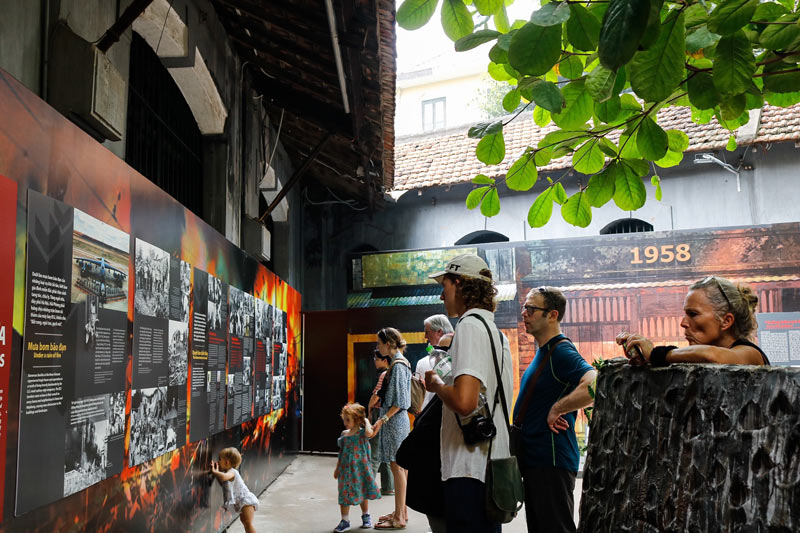Exploring Vietnam prison offers a profound insight into the nation's turbulent history, emphasizing the need for sensitivity and understanding. These sites, from Phu Quoc's transformation during the Vietnam War to Con Dao's brutal "tiger cages" and Hoa Lo's dual role as a colonial jail and "Hanoi Hilton," highlight the resilience and spirit of those who endured. Beyond their dark pasts, these prisons symbolize the strength of the human spirit and the importance of remembering history to shape a hopeful future.

Con Dao Prison, situated on the remote Con Dao Islands off the southern coast of Vietnam, serves as a stark reminder of the country’s turbulent past. Established by French colonists in the late 19th century, the prison complex was initially designed to detain and punish Vietnamese nationalists and revolutionaries who opposed colonial rule. Throughout its history, Con Dao has been notorious for its brutal treatment of prisoners, a role it continued to play during various periods of conflict, including the struggle for independence from France and later, the Vietnam War.
The prison complex gained international infamy for its "Tiger Cages." These were small, cramped cells where prisoners were kept in inhumane conditions, often subjected to severe torture and deprivation. The cages were so named because of their barred, open-top design, which resembled animal enclosures, allowing guards to easily monitor and abuse the inmates from above. The existence of these cages was largely unknown to the outside world until exposed by a delegation of U.S. Congressmen in 1970, leading to widespread condemnation and calls for reform.
Today, Con Dao Prison stands as a museum, its various sections preserved as a grim testament to the suffering endured by its inmates. Visitors to the museum can explore the Tiger Cages, along with other exhibits that depict the harsh realities of imprisonment on the island. These exhibits include detailed recreations of the living conditions within the prison, artifacts left behind by prisoners, and photographic evidence of the torture techniques employed by the jailers. Through these displays, Con Dao Prison offers a poignant insight into the darker chapters of Vietnamese history, serving as both a memorial to those who suffered and a cautionary tale about the excesses of unchecked power and the importance of human rights.

Phu Quoc Prison, located on Phu Quoc Island in Vietnam, stands as a stark reminder of the country's tumultuous past. Originally constructed during the French colonial era, this prison facility was initially used to detain Vietnamese nationalists and revolutionaries who were fighting for the country's independence. Its primary purpose was to suppress the burgeoning movements against colonial rule, employing various measures to break the spirit of the detainees.
As the tides of history turned, Phu Quoc Prison found a new role during the Vietnam War. It was expanded and utilized by the South Vietnamese government and its American allies as a detention center for Viet Cong soldiers and sympathizers. The prison gained notoriety for its extremely harsh conditions and the brutal treatment meted out to prisoners of war and political prisoners alike.
Today, Phu Quoc Prison has been transformed into a museum, serving as a poignant educational site for visitors from around the world. The museum houses several exhibits that showcase the severe conditions faced by the prisoners. These exhibits include detailed reconstructions of the living quarters, which were overcrowded and lacked basic human necessities, leading to the rapid spread of diseases.
One of the most harrowing aspects highlighted in the museum is the use of physical restraints and torture techniques. Mannequins and displays vividly depict the methods of torture employed to extract information or punish the inmates, including the infamous "tiger cages." These small, cramped cells were designed to restrict movement and subject prisoners to prolonged periods of physical discomfort and psychological distress.
Phu Quoc Prison also pays tribute to the resilience and bravery of its inmates, many of whom were key figures in the fight for Vietnam's independence. The exhibits provide a narrative of the struggles endured by these individuals, not just for their survival within the prison walls but also for their larger goal of liberating their nation from foreign domination.
Through personal belongings, letters, and photographs, the museum tells the stories of these prisoners, offering insights into their unyielding spirit and determination. Despite the inhumane conditions, many inmates continued to resist their captors, organizing protests and hunger strikes, and even attempting daring escapes.
The transformation of Phu Quoc Prison into a museum serves not only as a memorial to the suffering and sacrifice of those who were detained within its walls but also as a testament to the human spirit's capacity for endurance and hope in the face of unimaginable adversity. By shedding light on the harsh realities faced by the prisoners and their struggles for independence, the museum plays a crucial role in educating current and future generations about the importance of human rights and the value of freedom.

Hoa Lo Prison, infamously known as the "Hanoi Hilton," stands as a poignant symbol of Vietnam's turbulent history. Constructed in the late 19th century by the French colonial government, it was originally intended to detain Vietnamese political prisoners who opposed colonial rule. The prison's design and operation reflected the harsh realities of the era, with overcrowded cells, inadequate facilities, and a regime of severe punishment. Despite the harsh conditions, tales of courage and camaraderie among prisoners emerged from within its walls, many of which have been documented and shared in memoirs and histories of the war. Over time, Hoa Lo's purpose evolved, but its reputation as a place of suffering and resilience remained constant.
The prison's architecture and layout were designed to maximize control and minimize escape opportunities, featuring high walls, thick stone barriers, and a series of intricate locking mechanisms and guard posts. During the Vietnam War, Hoa Lo Prison gained international notoriety when it was used by North Vietnam to hold American prisoners of war (POWs). The prison's nickname, "Hanoi Hilton," was coined sarcastically by American POWs in reference to the stark contrast between the name's luxurious connotations and the reality of their captivity. Within these confines, American POWs, including notable figures such as Senator John McCain, was once imprisoned.
Today, a portion of Hoa Lo Prison has been preserved as a museum, offering visitors a glimpse into the past through a series of exhibits that narrate the prison's history and the lives of those who were incarcerated there. These exhibits not only focus on the period of the Vietnam War but also delve into the earlier era of French colonial rule, providing a comprehensive overview of the prison's role in Vietnamese history.
One of the museum's key features is its display of artifacts and personal items from former prisoners, including photographs, letters, and handmade tools. These items serve as poignant reminders of the human spirit's endurance in the face of adversity. Additionally, the museum hosts exhibits on the anti-war movement, highlighting the global context of the conflict and the widespread opposition to the war, particularly in the United States.
The transformation of Hoa Lo Prison into a museum serves not only as a memorial to those who suffered within its walls but also as an educational resource, shedding light on a crucial period in Vietnamese and world history. Through its preservation, Hoa Lo offers a space for reflection on issues of war, peace, and the enduring impact of historical events on national identity and collective memory.

When embarking on visits to historical landmarks such as the prisons of Con Dao, Phu Quoc, and Hoa Lo in Vietnam, it is imperative for travelers to adopt a demeanor of utmost respect and sensitivity. These sites extend beyond their appeal as tourist destinations, serving instead as somber commemorations of profound human suffering and significant historical milestones. It is incumbent upon visitors to comport themselves with the highest level of decorum and to dress with modesty, in homage to these locations that honor the endurance faced by myriad individuals.
An understanding of the historical backdrop against which these prisons operated is crucial. Amid the tumultuous periods of Vietnam's history, including the era of French colonial dominion and the Vietnam War, these facilities functioned as bastions of detention and, regrettably, instances of severe maltreatment. The stories of those confined within these walls are woven into the very fabric of Vietnam's national identity, accentuating the harsh realities of conflict and the unparalleled resilience of the human spirit. Reflecting on these facets markedly elevates travelers' understanding and esteem for the profound historical and emotive resonance of these sites.
Travelers are also encouraged to partake in activities that illuminate Vietnam's dynamic culture and the indomitable resilience of its citizens. Engaging with local communities, delving into the country's rich cultural heritage through visits to museums, temples, and other historical locales, or supporting eco-tourism and community-based initiatives, allows for a comprehensive perspective on the nation's past and the steadfastness of its people.
Acknowledging the lessons derived from history is indispensable in the nurturing of a future characterized by peace and mutual respect. The prisons of Con Dao, Phu Quoc, and Hoa Lo stand as poignant reminders of the dire consequences of conflict and the essential need for efforts toward peace. Through respectful engagement and a genuine openness to understanding these historical sites, travelers can deepen their appreciation for Vietnam's complex history and the remarkable resilience of its population.
Moved by the poignant stories of resilience and history within Vietnam's prisons? Extend your exploration of Vietnam’s rich historical tapestry from the mountains to the deltas and beaches with our Vietnam From Mountain To Deltas & Beach tour package, where each destination unveils a new layer of Vietnam's complex past and breathtaking beauty.
Explore the essence of Vietnam through our tailored tour packages. Each private tour is carefully designed to match your individual tastes, providing a unique and personal journey through Vietnam's secret wonders and cultural riches.